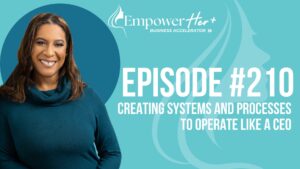You know that you need a marketing plan, but you don’t know where to start. Well, you’re in the right place. Here we’re going to walk you through our news series dedicated to teaching just how invaluable marketing plans are.
We will take you through the step-by-step process of creating your very own marketing plan with detailed instructions and information on why each section is important. We’ll end this series with giving you a great in-depth knowledge on marketing plans and a way to use your market lands on a monthly basis.
The first lesson in this series starts with defining what a marketing plan is and how to use it to really level up your marketing.
A marketing plan is a written guide for your company’s marketing strategy. It would include all the tactics you will use to reach your audience, including advertising, promotion and public relations.
Want to watch this content instead?
Marketing plan will help you identify what needs your business has when it comes to attracting new customers and how much money it will take to do so. The more specific you are in this document about who your customer is, where they are and the way they search for service and products like yours, the more prepared and more effective your marketing plan will be in reaching those potential customers and make an effective sales. A good marketing strategy can result in increased sales leads and heightened awareness of your brand across many channels but only if you have a plan in place.
Today we focusing on the different elements that make up a marketing plan. A good marketing plan will also contain the following seven sections in order for it to be effective. Also below is a free downloadable infographic with detailed information on sections of marketing plans.
The first section of my marketing plan includes the business summary here. We’re going to go over your business culture, history along with your vision statement, your mission statement, your business goals, and your team makeup. Your team makeup as in who is on your marketing team that is helping to accomplish your goals. You’re also going to go over your SWOT analysis, your strengths, your weaknesses, your opportunities on your threats.
The next section of your marketing plan is focused on your target market. Here. We’re going to develop some buyer personas, to better understand your target market. We’re also going to go over your industry, making sure that you are categorizing yourself and present in your industry as best as accurately as your brand calls for it. We’re also going to look at some competitors and you know, the different services that they offer that are similar and different to yours and how we can learn from them. Lastly, we will get into some keywords and key phrases that really relate to in general, and resonates with your target audience.
The next section we get into, we’re going to talk about your product and services. I like to call this section, the five Ps of marketing. We’re going to talk about the:
- product
- price
- process
- placement, and the
- promotion.
Here we will go over the details about what the product is or the services and, what problems they’re solving for people. We’re going to talk about the price of that product or service. We may not necessarily put the price or in all the promotions or any of the promotions, but to have it on paper and having it in one central location so you can visualize it is helpful. We’re going to talk about the process of the customer, the customer journey from seeing an ad to actually making a purchase. What does that process look like? Where do they need to go? How do they make the purchase and how can we make that as soon as possible for the customer? Placement is how and where your item or service your product or service is being promoted. We really want to make sure that we have a, you know, a visual presence, um, that we’re promoting it in them, all the right places. And then the last piece is the promotion, the different ways we are have been promoting it, and then ways that we’re interested in promoting a product. We’re not really necessarily getting into the weeds of marketing yet. We’re just kind of listing the general ideas of how we want to promote it.
The next section we are going to now get into the marketing strategies. We talked about the promotions and the five PS. Now we’re going to talk about the marketing strategies behind those promotions. What different marketing tactics are we going to try? Um, what tools and resources do you need to implement to execute these marketing strategies? And I tend to recommend trying maybe two or three different marketing strategies at a time to really lean, not exhaust yourself, and also to kind of be able to better track analyze the results progress. After we talk about the marketing strategies, the next section of my marketing plan, the outline framework, we talk about how we are going to be managing customer leads as well as how to retain the customers.
And so managing and accepting leads is, is key for marketing. It’s really important to really capture those people who have expressed interest in your product or service. And can we continue communicating with them on a regular basis to encourage that sale? Not being too salesy pitchy, but we’re finding different ways to continue and offer value, and practical resources to help them really what’s that word. You want your customers to know like, and trust you. And so we’re providing different opportunities for them to get to know you, to like what you do in life, what you offer, and to start trusting you and build a relationship with you. And so that’s what we really get into on that section of the market.
After that, we’re going to talk about the budget, how much is all this going to cost? So here we will take a very, in-depth look at all the different areas where cost may be integrated into a marketing plan and what needs to be prepared for instance, about that way. If you know, an overall budget amounts of how much you could spend, we could take that value and kind of allocate it to the best places to maximize your marketing plan.
And then the last section of my marketing plan framework that we talk about is the implementation process. Now that we have developed a plan and determined how much it will cost, we can now talk about how are we going to actually implement it. A plan means nothing if we don’t actually do anything with it. And so the implemented implement implementation process is really important. It’ll make sure that all the team members know what is expected of them and what their responsibility is. We want to set a time-frame of when we want things to be executed, and we want to also make sure that we have everything in place, all the resources, and tools in place, especially when it comes to tracking and analyzing the results and the effectiveness of what we’re spending our time, doing all of the sections put together, make it very thorough and practical plan for your marketing strategy.
After hearing all this, you’re likely to fall into one of two buckets, the first bucket, you may feel very intimidated. It’s a lot of work and it’s a lot of time and effort to put in this. And the other bucket is, Hey, let’s do this. I’m ready. Let’s get started! I’ve been waiting for an opportunity like this. Most business owners that I’ve worked with fall into the first bucket. So don’t worry if you feel intimidated or overwhelmed by all of the details that go into developing a marketing plan. I am here to make this process as easy and as stress-free as possible for you. So please go ahead and subscribe to my blog so that you can continue to educate yourself on marketing plans and build some resilience, to be able to develop your own.















